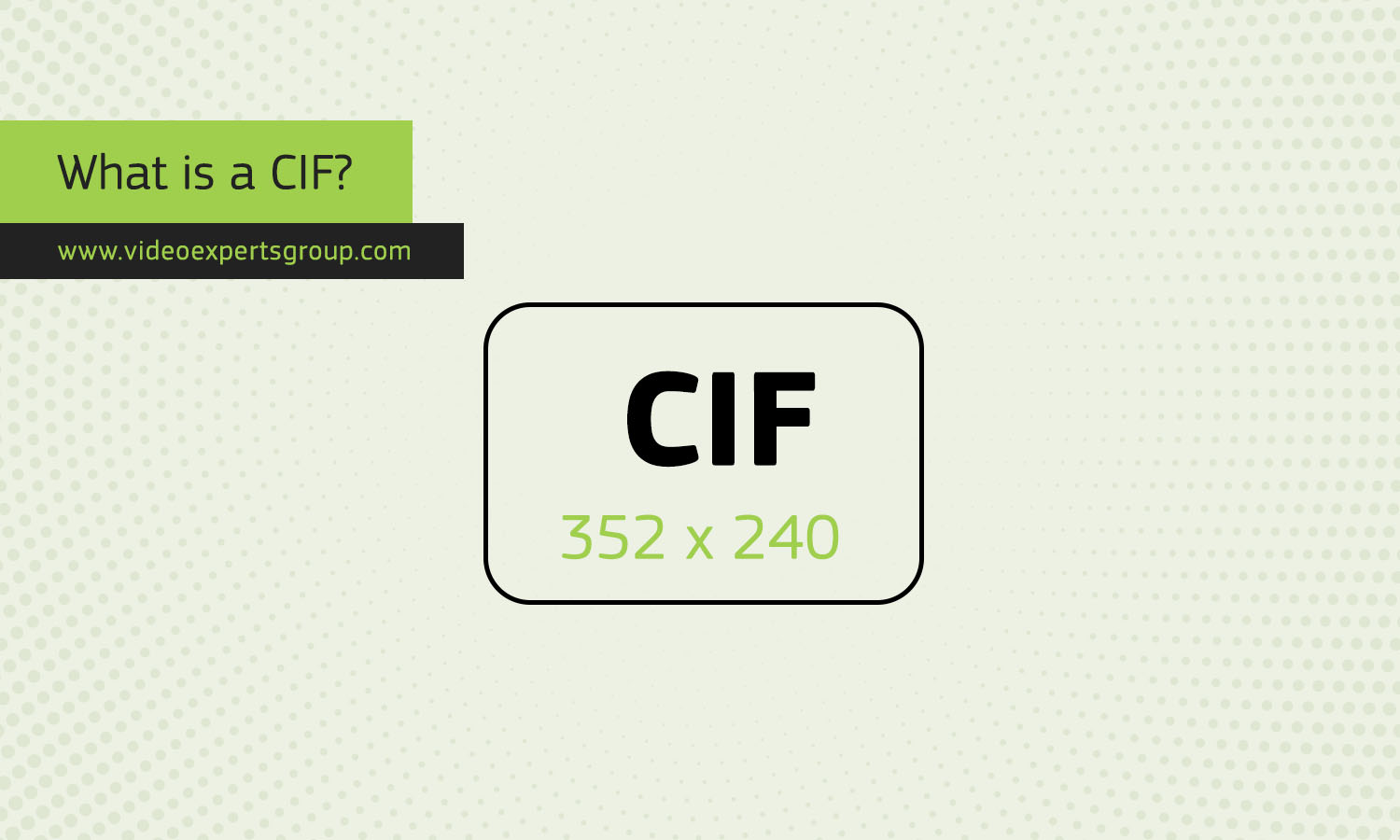Common Intermediate Format (CIF) is a standardized format for the picture resolution, frame rate, color space, and color subsampling of digital video sequences. It was first defined in the H.261 standard in 1988. CIF is designed to be a compromise format that is relatively easy to convert for use either with PAL or NTSC standard displays and cameras.
Meaning
The term Common Intermediate Format (CIF) refers to a standardized video sequence format. This format, also known as Full Common Intermediate Format (FCIF), outlines the specifications for picture resolution, frame rate, color space, and color subsampling in digital video sequences. The CIF format specifies a video sequence with a resolution of 352 × 240.
| Standard | Size | Pixels |
| SQCIF | 128 x 96 | 12,288 |
| QCIF | 176 x 120 | 21,120 |
| CIF | 352 x 240 | 84,480 |
| 2CIF | 720 x 240 | 168,960 |
| 4CIF | 704 x 480 | 337,920 |
| D1 | 720 x 480 | 345,600 |
| 960H | 960 x 480 | 460,800 |
| HD 720P | 1280 x 720 | 921,600 |
| HD 960P | 1280 x 960 | 1,228,800 |
| UXGA | 1600 x 1200 | 1,920,000 |
| FULL HD 1080P | 1920 x 1080 | 2,073,600 |
What is CIF used for?
CIF is used in video teleconferencing systems. It is a lower-resolution form of video encoding and is used in closed circuit television, DVD, or online video design. CIF is a choice for less ‘high-res’ applications, in contrast to higher-resolution megapixel results.
Pros and cons of the CIF resolution
Pros:
- Compatibility: CIF is a standardized format that is relatively easy to convert for use with either PAL or NTSC standard displays and cameras. This makes it a versatile choice for various applications.
- Lower Bandwidth Requirements: Due to its lower resolution, CIF requires less bandwidth compared to higher-resolution formats. This can be beneficial in situations where bandwidth is limited or expensive.
- Suitability for Certain Applications: CIF is often used in video teleconferencing systems and closed-circuit television (CCTV) where high resolution is not necessarily required. It can also be used in DVD or online video design.
- Cost-Effectiveness: CIF can be a more cost-effective solution compared to higher-resolution formats, as it requires less storage space and less powerful hardware to process the video.
Cons:
CIF also has its disadvantages. It is a lower-resolution form of video encoding, which means it may not provide the same level of detail or clarity as higher-resolution formats. Additionally, because CIF is a compromise format, it may not be perfectly suited to either PAL or NTSC standards, potentially leading to compatibility issues.
















